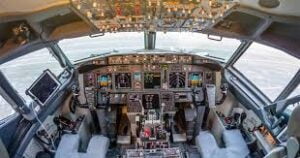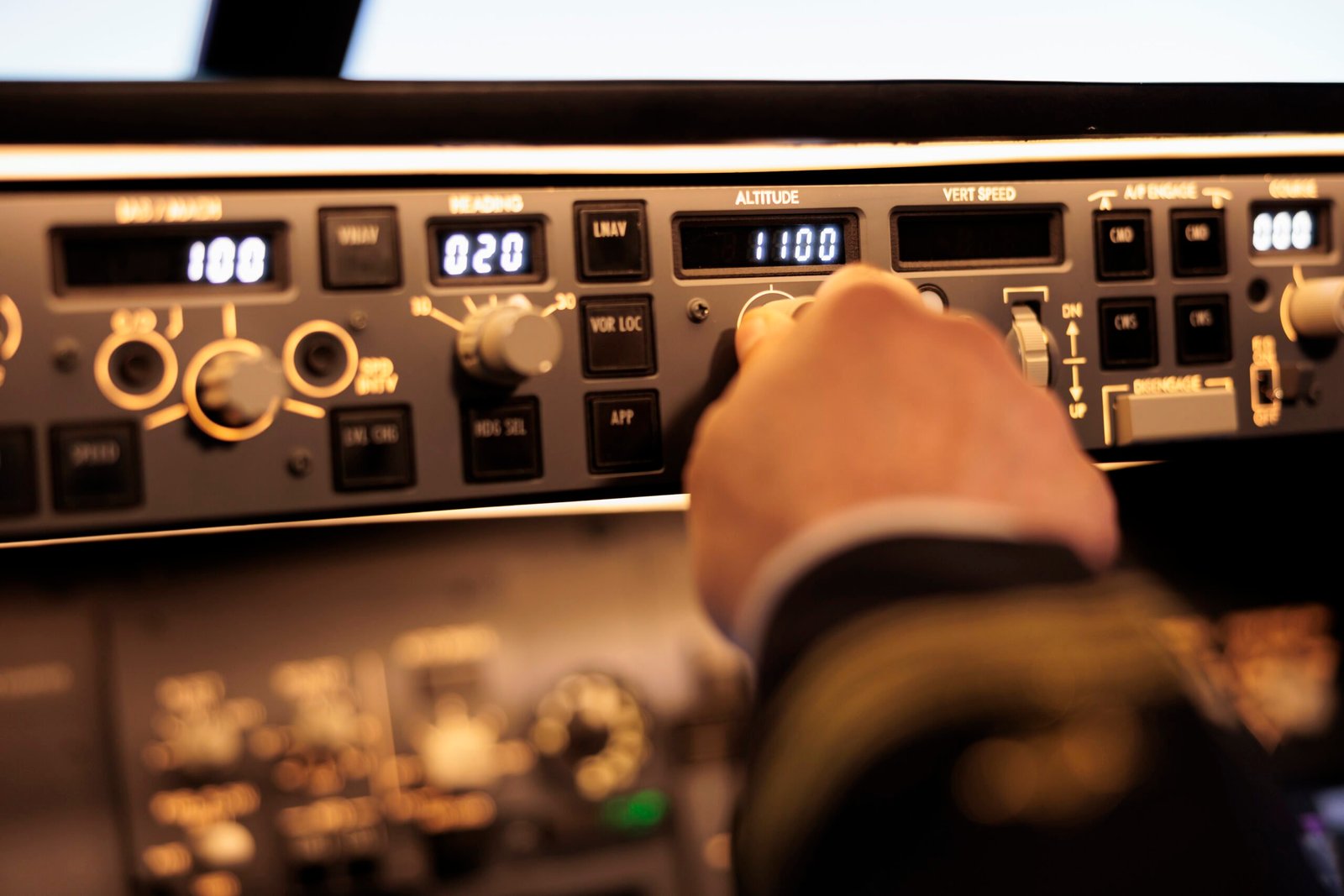The ARINC 818 protocol stands as a cornerstone in modern avionics, facilitating seamless and high-speed data communication within aerospace systems.
Developed by Aeronautical Radio, Incorporated (ARINC), this protocol addresses the growing demand for robust, standardized communication interfaces in the aviation industry.
Its inception stemmed from the need to efficiently transmit and receive video and data streams between various avionics subsystems, including cockpit displays, sensors, and mission computers, in both commercial and military aircraft.
In the intricate ecosystem of avionics, where reliability and precision are paramount, ARINC 818 serves as a versatile and efficient solution.
By defining specific standards for data encoding, physical interfaces, and protocol layering, ARINC 818 ensures interoperability across different avionics components and manufacturers.
Over the years, it has evolved to accommodate advancements in display technology, higher resolutions, and increased data throughput requirements, thereby staying relevant amidst the dynamic landscape of aerospace engineering.
As aviation systems continue to embrace digitalization and enhanced connectivity, understanding the fundamentals of ARINC 818 becomes indispensable.
This protocol not only streamlines data transmission but also fosters innovation by providing a common framework for the integration of emerging technologies.
In the subsequent sections, we delve deeper into the intricacies of ARINC 818, exploring its technical specifications, implementation challenges, and the transformative impact it holds for the future of aviation.
Basics of ARINC 818 Protocol
The foundation of ARINC 818 lies in its comprehensive approach to defining the structure and operation of avionics video systems.
At its core, ARINC 818 establishes a standardized protocol for the transmission of video, audio, and data between avionics subsystems, ensuring seamless interoperability and compatibility across diverse hardware platforms.
One of the key components of ARINC 818 is its robust data-link layer, which governs the framing and synchronization of data packets.
Within this layer, the protocol defines various parameters such as frame structure, header format, and error detection mechanisms.
These specifications ensure reliable data transmission over the designated channels, even in challenging aerospace environments characterized by electromagnetic interference and other sources of signal degradation.
Another fundamental aspect of ARINC 818 is its support for different pixel formats and data types, catering to the diverse requirements of modern avionics displays and sensors.
Whether it’s monochrome, grayscale, or full-color imagery, ARINC 818 provides the necessary flexibility to accommodate various display resolutions and color depths, thereby enabling seamless integration with a wide range of avionics equipment.
In addition to its data-link and pixel format specifications, ARINC 818 defines the physical layer characteristics essential for interfacing avionics devices.
This includes connector types, pin configurations, and cable requirements, ensuring standardized connectivity across different avionics subsystems.
By establishing clear guidelines for physical interfaces, ARINC 818 simplifies system integration and maintenance, ultimately enhancing the reliability and performance of avionics systems in both commercial and military aircraft.

Technical Specifications of ARINC 818
A. Physical Layer Characteristics
Connector Types and Pin Configurations:
- Description of the connector types commonly used with ARINC 818, such as Miniature Circular Connectors (MCC), and their pin configurations.
- Explanation of how different connectors and pin configurations accommodate various data rates and signal requirements.
Cable Requirements and Signal Integrity:
- Overview of cable requirements including cable types, shielding, and impedance considerations to maintain signal integrity.
- Discussion on signal attenuation, crosstalk, and other factors affecting cable performance.
- Importance of proper cable installation and routing to minimize signal degradation.
B. Data Link Layer Features
Frame Structure and Header Format:
- Explanation of the frame structure of ARINC 818 packets, including the header, payload, and footer.
- Description of the header format, which includes fields such as synchronization patterns, packet type, channel ID, and packet size.
- Discussion on the significance of each field in ensuring proper packet routing and data integrity.
Error Detection and Correction Mechanisms:
- Overview of error detection techniques employed in ARINC 818, such as CRC (Cyclic Redundancy Check).
- Explanation of how error correction is achieved through retransmission mechanisms or redundancy in the data stream.
- Importance of error detection and correction in maintaining data reliability, especially in critical avionics applications.
Flow Control and Synchronization:
- Discussion on flow control mechanisms used to regulate the data flow between transmitters and receivers.
- Explanation of synchronization methods to ensure proper timing alignment between data frames.
- Importance of flow control and synchronization in preventing data loss and maintaining system stability.
C. Protocol Layer Details
Data Encoding and Decoding:
- Overview of data encoding schemes used in ARINC 818, such as 8b/10b encoding.
- Explanation of how data is encoded and decoded to ensure accurate transmission and reception.
- Discussion on the impact of encoding on data throughput and overhead.
Clocking and Timing Considerations:
- Explanation of clocking mechanisms used for timing synchronization between transmitter and receiver.
- Overview of timing requirements and considerations for data transmission, including clock rates and synchronization accuracy.
- Importance of precise timing for reliable data transfer and system operation.
Packetization and Data Transfer Methods:
- Description of packetization techniques for breaking down data into manageable chunks for transmission.
- Overview of different data transfer methods, such as point-to-point and multicast, supported by ARINC 818.
- Discussion on the efficiency and flexibility of data transfer methods in various avionics applications.
Implementation and Integration
Implementing and integrating the ARINC 818 protocol into avionics systems involves a thorough understanding of the hardware and software aspects, as well as considerations for compatibility and performance. Here, we delve into the key aspects involved in the implementation and integration process:
A. Hardware Considerations for ARINC 818 Implementation
FPGA (Field-Programmable Gate Array) Design:
- FPGA technology is commonly utilized for implementing ARINC 818 interfaces due to its flexibility and reconfigurability.
- Designing FPGA-based solutions involves developing hardware logic that handles data serialization, deserialization, and protocol processing.
- Optimizing FPGA designs for high-speed data transfer and ensuring compliance with ARINC 818 specifications is crucial.
ASIC (Application-Specific Integrated Circuit) Development:
- ASICs offer potential advantages in terms of performance, power efficiency, and cost for mass production of avionics systems.
- Developing ARINC 818-compliant ASICs requires precise design and verification processes to meet stringent aviation standards.
- ASIC-based solutions may offer enhanced integration capabilities and reduced footprint compared to FPGA implementations.
Interfacing with Display Units and Avionics Systems:
Integrating ARINC 818 interfaces with display units necessitates compatibility with various display technologies such as LCDs, OLEDs, or HUDs (Head-Up Displays).
Ensuring seamless communication between ARINC 818-enabled components and other avionics systems, such as flight computers and sensor modules, is essential.
Interface standards and protocols for data exchange between ARINC 818 devices and peripheral systems need to be established and adhered to.
B. Software Aspects and Protocol Stacks
Device Drivers and Communication Libraries:
- Developing robust device drivers and communication libraries is essential for enabling ARINC 818 functionality within avionics systems.
- These software components facilitate communication between the ARINC 818 hardware interface and higher-level application software.
- Implementing efficient data handling, error recovery mechanisms, and synchronization routines within device drivers is critical for reliable operation.
Protocol Validation and Compliance Testing:
- Rigorous validation and testing procedures are required to ensure compliance with ARINC 818 specifications and standards.
- Verification of protocol conformance, interoperability testing with different devices, and performance benchmarking are integral parts of the testing process.
- Compliance with safety-critical regulations and certification requirements, such as RTCA/DO-254 and RTCA/DO-178C, must be demonstrated.
Integration Challenges and Solutions:
- Integrating ARINC 818 interfaces into existing avionics architectures may pose challenges related to system complexity, timing synchronization, and data integrity.
- Solutions involve meticulous system design, thorough testing, and collaboration among stakeholders to address potential issues.
- Interfacing ARINC 818 with legacy systems or non-ARINC protocols requires appropriate bridging mechanisms and protocol converters.
Advantages and Challenges of ARINC 818 Protocol
A. Advantages in Avionics Systems
High-Speed Data Transfer Capabilities:
- ARINC 818 protocol offers high-speed data transfer capabilities, making it suitable for demanding applications in avionics systems.
- With data rates reaching up to several gigabits per second, ARINC 818 facilitates real-time transmission of critical information such as video, sensor data, and cockpit displays.
Scalability and Flexibility:
- The protocol is designed to be scalable, accommodating various resolutions, color depths, and frame rates.
- This scalability allows avionics systems to adapt to different display configurations and requirements without significant protocol modifications, enhancing flexibility in system design and integration.
Compatibility with Legacy Systems:
- ARINC 818 protocol is backward compatible with earlier versions, enabling seamless integration with legacy avionics systems.
- This compatibility minimizes the need for costly system upgrades and ensures interoperability between new and existing components, reducing downtime and maintenance costs.
B. Challenges and Limitations
Complexity of Implementation:
- Implementing the ARINC 818 protocol requires specialized hardware and software expertise due to its complexity.
- Designing robust systems that meet stringent performance and reliability requirements while adhering to protocol specifications can pose challenges for avionics engineers and developers.
Cost Considerations and Industry Adoption:
- The initial investment required for implementing the ARINC 818 protocol can be substantial, especially for smaller aerospace companies and manufacturers.
- Cost considerations may hinder the widespread adoption of the protocol, particularly in budget-constrained projects or markets where legacy systems prevail.
Interoperability Issues with Non-ARINC Systems:
While the ARINC 818 protocol offers compatibility with legacy ARINC systems, interoperability with non-ARINC standards can be problematic.
Integration challenges may arise when interfacing with third-party avionics systems or components using different communication protocols, necessitating additional development efforts and potentially introducing compatibility issues.
Future Trends and Innovations
A. Evolving Standards and Versions of ARINC 818
- Continuous Improvement: ARINC 818 is expected to undergo further refinement and enhancements to meet the evolving requirements of the aviation industry.
- Adoption of New Technologies: Future versions may incorporate support for emerging technologies such as higher resolutions, increased bandwidth, and improved data compression techniques.
B. Integration with Emerging Technologies (e.g., AR/VR, AI)
- AR/VR Integration: ARINC 818 may facilitate the integration of augmented reality (AR) and virtual reality (VR) systems into cockpit displays, providing pilots with enhanced situational awareness and decision-making capabilities.
- AI Integration: Integration with artificial intelligence (AI) algorithms could optimize data processing and analysis, enabling more intelligent avionics systems for tasks like predictive maintenance, route optimization, and automated decision-making.
C. Industry Initiatives and Collaborations for Standardization
- Industry Collaboration: Collaborative efforts between avionics manufacturers, airlines, and regulatory bodies will drive the standardization of ARINC 818 and ensure compatibility across different systems and platforms.
- Adoption by Regulatory Bodies: Regulatory bodies such as the Federal Aviation Administration (FAA) and the European Union Aviation Safety Agency (EASA) may endorse ARINC 818 as the standard protocol for avionics interfaces, further promoting its widespread adoption.
D. Potential Applications Beyond the Aviation Sector
- Automotive Industry: ARINC 818’s high-speed data transfer capabilities and robust error detection mechanisms make it suitable for use in automotive display systems, enabling advanced features such as heads-up displays (HUDs) and infotainment systems.
- Defense and Aerospace: The protocol’s reliability and performance make it well-suited for military and aerospace applications beyond commercial aviation, including unmanned aerial vehicles (UAVs), spacecraft, and missile guidance systems.
Overall, the future of ARINC 818 holds promising advancements in both technology and industry adoption, paving the way for more efficient and sophisticated avionics systems in the years to come.
Conclusion
In conclusion, ARINC 818 stands as a cornerstone in the realm of avionics protocols, offering a robust framework for high-speed data transmission and display interfaces in the aviation industry. Throughout this discussion, we have explored the fundamental principles, technical specifications, implementation challenges, and future trends surrounding ARINC 818.
As aviation technology continues to advance rapidly, ARINC 818 remains at the forefront, evolving to meet the ever-changing demands of modern aircraft systems. Its scalability, flexibility, and compatibility with legacy systems make it a preferred choice for avionics manufacturers and operators alike.
Looking ahead, the future of ARINC 818 appears bright, with ongoing efforts focused on standardization, integration with emerging technologies such as AR/VR and AI, and its potential applications beyond the aviation sector. Collaboration among industry stakeholders and endorsement by regulatory bodies will further cement its position as the de facto standard for avionics interfaces.
In essence, ARINC 818 embodies the spirit of innovation and collaboration driving progress in aviation technology. By embracing this protocol, stakeholders can unlock new possibilities for safer, more efficient, and more intelligent aircraft systems, ensuring a bright future for the aviation industry as a whole.






